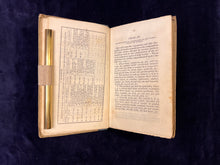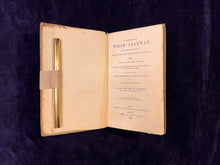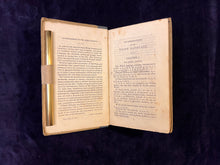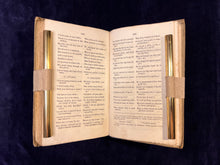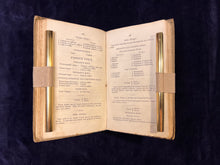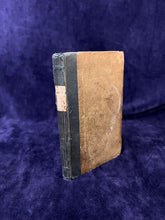
[CYMRAEG, LANGUAGE, PEDAGOGY, WALES]
W. GAMBOLD. A Compendious Welsh Grammar, or A Short and Easy Introduction to the Welsh Language: with Copious Alphabetical Table of Particles, Shewing their Proper Effects on the Intials of Subsequent Words; to which is added a Short English and Welsh Vocabulary, and Familiar Dialogues. Fourth Edition, Revised and Corrected, and Improved. Bala: Printed and Published by R. Saunderson; London: H. Hughes, St. Martin’s Le Grand, 1843.
FOURTH EDITION. (160 x 100 mm) pp. 181. No issues to report. Former owner’s name on front flyleaf; pencil notes on first page. No issues to report. Standard 19th century cardboard binding, a bit worn, clothe spine fraying but still very sturdy. Overall GOOD to VERY GOOD condition.
“Fe fu dillad lleithion yn angeu i lawer. Ewch i nol fy nghadach sidan!”
Using the Reverend William Gambold’s innovative Welsh grammar textbook, you, too, could learn to express that “damp clothes have been the death of many,” and then command of someone: “Fetch me my silk handkerchief!” I mean, I don’t think it’s going to get you around Cardiff, but you’ll have some fun, for sure.
Perhaps a quick linguistics lesson may be in order: Welsh is not related to English. Welsh is a Celtic language, a linguistic family separate from the Germanic one which houses English, and split in to two further subdivisions of Brythonic and Goidelic. On the Goidelic, side, we have Irish, Scottish-Gaelic, and Manx; on the Brythonic side, Welsh stands with Cornish and Breton. The difference between English and Welsh is as far apart as “how are you?” To “Sut wyt t’in gweneud.?” What’s more, one of the more well known features of the Celtic languages is the change of the first letter of words based on their function in a sentence (initial consonant mutation, for my linguists out there). The Reverend William Gambold, however, sought to clarify this complicated aspect of the language through his “copious … table of particles, shewing their proper effects on the initials of subsequent words,” that is, he’s provided charts for mutations. And much is made of this diagram for its “intention of rendering more intelligible a peculiarity on account of which the British language has been universally considered as unattainable by foreigners.” (Maybe it was a defect of the the Anglophone pedagogy rather than the language?)
The 19th century owner of this “compendious” yet “short and easy” Welsh grammar textbook has written her name & date that she began studying the language, signing off with perhaps politically charged “Cymru am byth!”— Wales forever! England and France spent a lot of time and money trying to suppress the Celtic languages. In the 19th century, however, a “Celtic Revival” was underway, particularly in Ireland and Wales, wherein literature, lyrics, and political tracts were written in Irish and Welsh, and the spoken language became a source of pride and defiance.
So, “gwnawn y goreu o’n hamser”, let us make the most of our time & learn Welsh .
MB338






